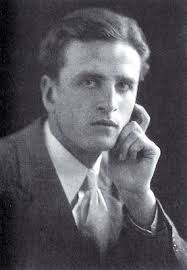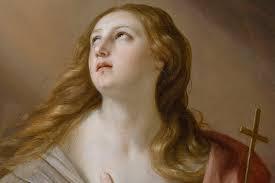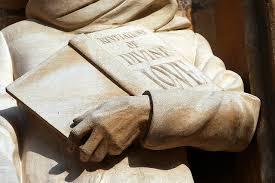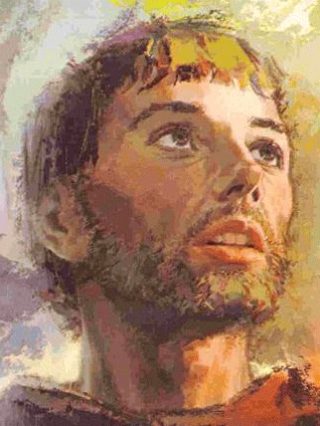Thomas Keating – Modern Mystic
Back in 2004 when I was deepening my familiarity with mindfulness as a way of reducing stress, my friend Joe sent me two boxed sets of CDs titled The Contemplative Journey. They featured a rather elderly Cistercian monk called Fr Thomas Keating. I was a bit unsure about whether I really wanted to listen to any of this stuff at all but I decided to take some of the CDs with me and play them in the car when I was going on long journeys.
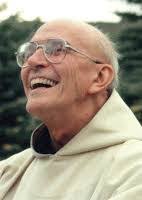
Two things impressed me about this man: his understanding of both modern psychology and the scriptures and also his sense of humour. I had observed the same kind of spontaneous humour in Buddhist monks and I took it as a sign of a kind of spirituality that is fully at home in both the body and in the everyday world.
The Flight to the East
Fr Thomas Keating although steeped in the Christian contemplative tradition was himself deeply influenced by the monasticism of the East, both Buddhist and Hindu. For years he had watched many American young people from both Catholic and Jewish backgrounds heading off to India and further afield to find themselves spiritually. Even the Beatles took off for India in 1968 to study Transendental Meditation with the famed Maharishi Mahesh Yogi.

When a Buddhist meditation Centre opened up a few miles from Thomas Keating’s monastery, he watched how the young especially, flocked there to attend meditation retreats. He was perplexed and a bit saddened about this because it seemed they were blissfully ignorant of a not dissimilar spiritual tradition within Christianity itself.
Re-Discovering What Was Almost Lost
However he recognised that even for the monks in his own monastery, the contemplative aspect of spirituality tended to be neglected. Encouraged by the new ecumenism of Vatican II, he and some of his fellow monks attended various retreats taught by Zen Buddhist monks and teachers of Transcendental Meditation or TM. He was impressed by the discipline and moral authority of these teachers, and how Buddhist teachings in particular, had much to say about coping with human suffering. This curious situation prompted him to ask:
Could we put the Christian tradition into a form that would be accessible to people in the active ministry today and to young people who have been instructed in an Eastern technique and might be interested to return to their Christian roots if they knew there was something similar in the Christian tradition?
Intimacy with God: An Introduction to Centering Prayer
Inspired by the writings of his fellow Cistercian Thomas Merton and along with Frs William Menninger and Basil Pennington he developed a form of contemplative prayer now known as Centering Prayer. He also revived the old Benedictine practice known as Lectio Divina, a way of reading the scriptures (which I will talk about in a future article). To his surprise and delight, when he organised retreats based on this new method of Centering Prayer, they proved very popular, particularly with laypeople.
In 1984 he co-founded Contemplative Outreach, an international and ecumenical spiritual network that teach both Centering Prayer and Lectio Divina. There is currently a very active branch of Contemplative Outreach in Ireland. So let’s consider now what Centering prayer involves.
Centering Prayer
Centering prayer is a training in letting go.
Thomas Keating
At its most fundamental, Centering prayer is not unlike the method of Christian Meditation as formulated by Fr John Main (as described in a previous article). But its roots derive mainly from the anonymous writer of The Cloud of Unknowing a 14th century spiritual classic. Here are the basic steps:
Step 1:
Find a quiet place. Sit upright in a chair or on a meditation stool so that the body is both alert and relaxed and close your eyes.
Step 2:
Choose a sacred word usually of one or at most two syllables such as: ‘Jesus’, ‘Peace’, ‘Love’ etc. You can say this word in your mind. Use the same word every time you practice.
Step 3:
Sit with the intention of resting in God’s presence. Avoid thinking or using your imagination to conjure up images of God or anything else. However, there is no need to fight with our mind if thoughts arise.
Step 4:
Every time you notice that there are thoughts or distractions of any kind, including particular emotions, memories or sensations in your body, say the sacred word in your mind. The intention is to use the sacred word to return your awareness to simply rest in the Divine presence. The sacred word acts to anchor the attention back into the experience being in the Divine presence.
Step 5:
When you have done this for about twenty minutes, remain still for a couple of minutes more as your prepare yourself for opening your eyes and being active again.
Thomas Keating recommended that Centering Prayer be practiced twice a day for twenty minutes at a stretch. Many of the benefits are not unlike those of mindfulness but perhaps with an added sense of spiritual fulfilment and the growth of wisdom. Fr Thomas himself remained faithful to this practice for the rest of his life and ultimately gave himself into God’s presence when he died at the ripe old age of 95 on October 25th, 2018.

